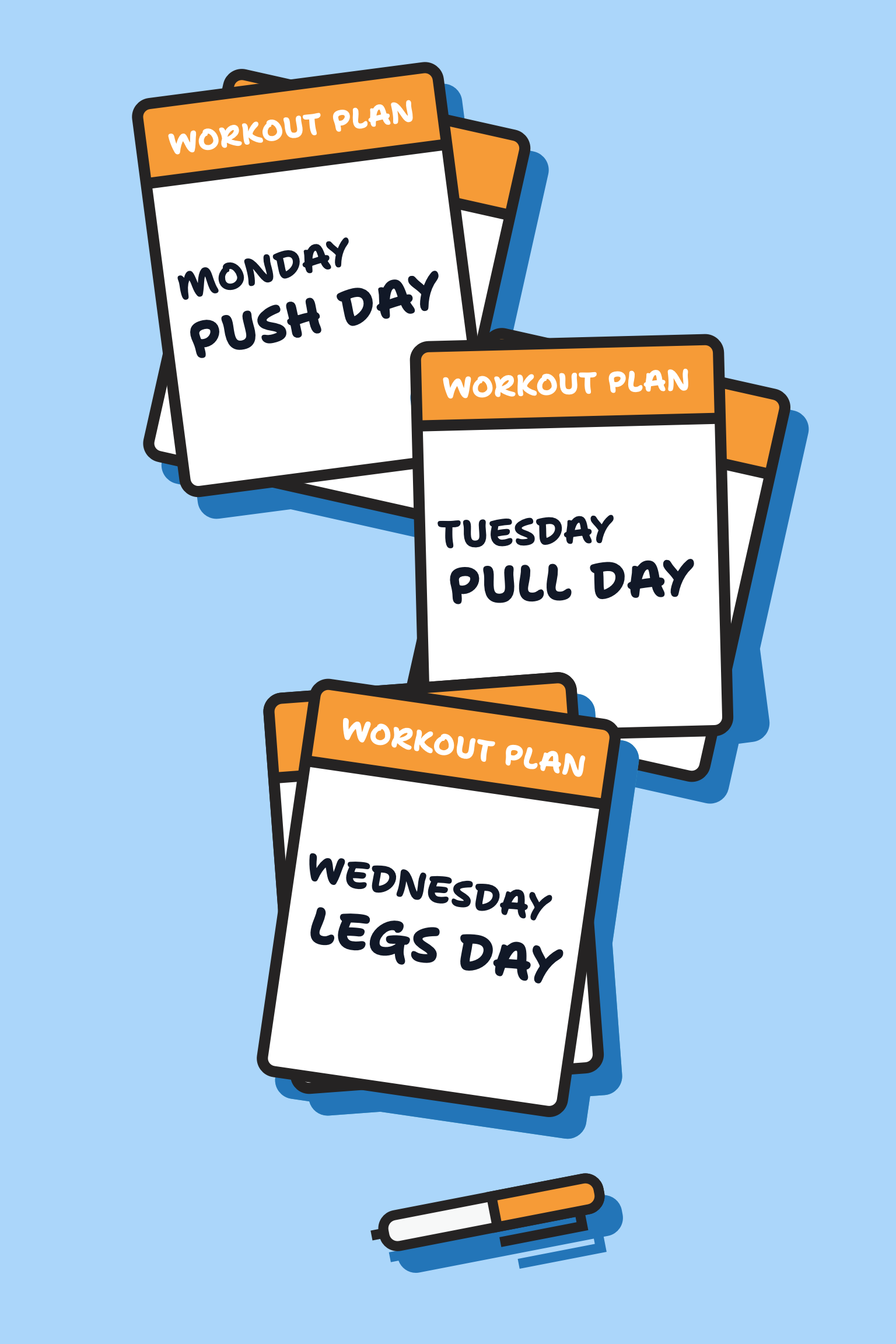How to program a 5 day PPL split
What is the 5 day PPL split?
The push-pull-legs (PPL) split is a popular workout routine that is usually followed 3 or 6 days per week. Our 5 day PPL split deviates slightly from this norm, combining the second push and pull days together.
The 5 day routine has all the same benefits of 6 day push-pull-legs, which maximizes frequency by hitting each muscle group twice per week. But it also provides additional flexibility and rest time, making it a great routine if you have a busy schedule.
Why train with a PPL split?
A PPL split divides your routine into 3 types of workout:
- Push days - Exercises targeting your chest, shoulders and triceps, including bench press, shoulder press and tricep extensions.
- Pull days - Exercises targeting your back, biceps and rear delts, including lat pulldowns, pull-ups and face pulls.
- Leg days - Exercises that work your lower body, including deadlifts, squats, lunges and calf raises.
Training with a PPL split allows you to hit different muscles groups on each day of the week.
Hypertrophy
Because a PPL sees you work each muscle group twice per week, the routine maximizes your frequency (the number of times you work a muscle group over the week) and enables you to achieve a higher training volume in your routine.
High training volumes are crucial to stimulating muscle growth and increasing your total muscle mass. If your goal is muscle hypertrophy, then using a PPL split to achieve a high volume can be a good approach to training.
If volume is the key to hypertrophy, it makes sense to hit your muscles with as much frequency as possible. The major limitation here is the amount of rest time you need to allow between workouts. Muscle repair is what causes your muscles to grow stronger and bigger, and this process takes up to 48 hours after working out.
Because of the way a PPL split separates muscle groups, it provides the minimum 48 hour recovery period needed before you work the same muscle group again.
Flexibility
The push-pull-legs (PPL) split is a simple way to program your workout routine. It's suitable for a wide range of trainees, from beginners to advanced lifters. The separation into 3 basic categories of exercise make it easy to work all muscle groups evenly and efficiently.
It's simplicity also makes it a flexible routine, making it easy to adjust based on your recovery needs and weekly schedule.
Compound exercises
This PPL split is focused on compound exercises first and foremost. Compound exercises target multiple muscle groups simultaneously with the same movement. This increases the efficiency of your workout routine, by maximizing the impact of your workout time.
Exercises like the deadlift, bench press and squat engage several muscles simultaneously, making them more time-efficient than isolation exercises that only target a single muscle group at a time.
There are also some isolation exercises included to ensure adequate training of your biceps and triceps.
Training 6 days per week
PPL splits are normally followed between 3 and 6 days per week. A 3 day split is a great option for beginners, since it provides a lot of recovery time through the week.
At the high end, you can train PPL splits 6 days per week, with a single rest day. This is an intense routine that is only suitable for advanced lifters.

Regardless of your usual workout routine, PPL splits provide a lot of flexibility. If you have a busy week and are short on training time, you can drop a day by combining a push and pull day into a single session, for example.
Equally, if you have more time available, you may choose to expand your routine to 6 days per week for more volume.
This flexibility ensures that your fitness routine is not derailed by changes in your weekly schedule. Making steady progress towards your fitness goals is the key to success.
5 day PPL split vs 6 day PPL split
Training 5 days per week rather than 6 has a number of benefits that make it suitable for many trainee's schedules.
- Extra day of rest - Reducing to 5 days a week provides an extra day of rest, allowing your muscles more time to recover between workouts. This not only reduces the risk of overtraining, but it can also increase the overall performance of your workout routine.
- More flexibility - If you miss one or two workouts in a 6 day routine, it can disrupt your entire workout schedule. A 5 day PPL split, however, can accommodate adjustments week by week, making it compatible with our busy schedules!
FAQs
How long is each training session in the 5 day PPL split?
Each training session in the PPL split is designed to last between 60 to 90 minutes. This duration is optimal for both strength and hypertrophy goals, providing enough time to adequately work each muscle group.
References
Schoenfeld, B. J., Ogborn, D., & Krieger, J. W. (2017). Dose-response relationship between weekly resistance training volume and increases in muscle mass: A systematic review and meta-analysis. Journal of sports sciences, 35(11), 1073-1082.
MacDougall, J. D., Gibala, M. J., Tarnopolsky, M. A., MacDonald, J. R., Interisano, S. A., & Yarasheski, K. E. (1995). The time course for elevated muscle protein synthesis following heavy resistance exercise. Canadian Journal of applied physiology, 20(4), 480-486.



